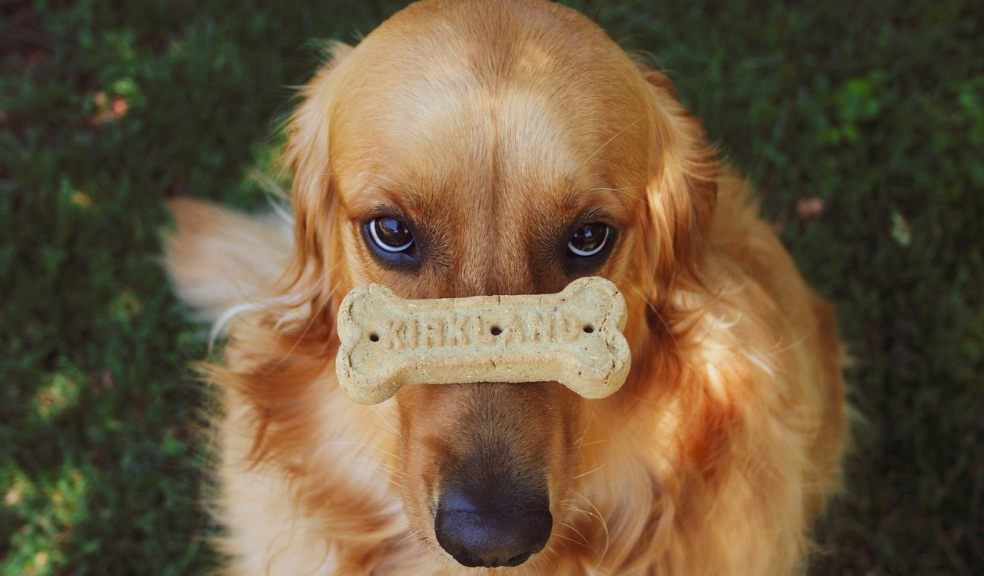
Quick tricks you can teach your dog
No matter the reason that you get a dog, they can contribute positively to numerous aspects of your lives. Whether you want a puppy to look after before having a child or have acquired a dog for comfort reasons – such as a therapy dog – they are sure to be a large part of your life.
If you are a new pet owner or a more experienced one, have you considered how you can teach your dog tricks? If you find yourself in the position of wanting to teach your dog tricks, you could find yourself spending hours and hours online, researching techniques that are 'supposed' to work.
But, just like other animals and species on the planet, dogs are unique to one another, and using one technique on multiple animals or breeds, is not sure to work; teaching your dog tricks is not a one-size-fits-all process.
To assist in your quest of teaching tricks to your dog, consider the list that we have included below! It details some of the possible things to consider before deciding to teach your dog tricks, as well as a list of potential tricks themselves.
Potential Factors to Mull Over Before Teaching Your Dog Tricks
Whether you are the pet parent to a puppy who exerts loads of energy or to the more sedentary senior, there are tricks out there that dogs of all breeds and ages can learn, which suit their development and mobility levels.
Experts have estimated that, in some cases, senior dogs are easier to teach tricks to than their younger counterparts. While tricks like 'sit' can be used on a day-to-day basis for well-behaved pooches, various other tricks can be used to wow any future guests at parties.
With current government restrictions stating that we should stay at home, there is plenty of time and opportunity to spend with your dog, with polls concluding that almost 77% of people have spent more time with their pooches like never before; what better chance than now to encourage your dog to learn a new trick!
Before launching into the techniques themselves, certain factors could be considered when creating some sort of pathway to teaching the trick to your dog. Obviously you love your precious pooch, so it almost goes without saying, almost – but you should never teach your dog a trick that could potentially harm or injure them in any way.
Dog Treats
These are a powerful tool in any pet parent's toolbox, but they can be overused in some instances.
When utilising treats to teach your dog a trick, consider monitoring the number that you are giving to your dog. Giving a dog too many treats could lead to health issues like obesity and other related problems like diabetes, diarrhoea, and more.
However, dog treats are not the only things you can utilise to your advantage when teaching your dog new tricks; there is an extensive range of toys and other items on the market that could be used when teaching your dog tricks. This leads us to the next point.
Toys and Other Equipment
Whistles are a useful tool to use when training your dog or when teaching them new tricks. Whistles could be used in both loud and quiet environments and for attracting the attention of your dog when they are some distance away.
While whistles are a useful tool to use, dogs will need to be taught to recognise them and the noises they make, and the commands the noises stand for before using the whistle for teaching other, potentially more challenging tricks.
What's more, there is a range of indoor and outdoor toys and equipment available to assist in the learning process and could make the process a little easier.
Protecting Your Dog
Before teaching your dog or puppy tricks, or even before you have adopted them, considering the importance of having pet insurance, is an important step. As a devoted pet parent, the last thing that you want is for any harm to come to your four-legged friend. That’s why you should think about cover as early as possible because pet insurance is there for their everyday care covering them for accidents and illnesses.
For the most part, it can be confusing and overwhelming to decide which pet insurance to choose. However, by considering possessing a policy from as early as possible, the support you need may be there through tough or challenging times that you both might face. There are different types of pet insurance, and come in a range of different cover levels, so consider and compare all your options thoroughly. That way, you can rest assured you’ve done the legwork to find the best pet insurance for you and your pet.
Tricks to Teach Your Dog
Along with the basic, day-to-day tricks, many more challenging and impressive tricks can be taught to your pooches, which can be taught quickly in some cases. If you are considering teaching your dog new tricks and are searching for suitable tricks to teach your dog – whether young or old – there is a helpful list below.
Shake Hands/Shake Paws
A universally recognised trick, and also one which impresses pet parents and dog lovers alike. Many people experience emotions of joy and happiness when fussing a dog and experience further joy when the dog in question can offer you their paw.
Consider using a treat or a form of positive reinforcement when teaching this trick to your four-legged friend for maximum impact and to speed up the learning process. Furthermore, like the infamous saying "you can’t teach an old dog new tricks," this can’t be said for this trick. Senior dogs are just as capable as their younger counterparts at learning tricks, particularly less strenuous ones like this.
Speaking
Some dogs out there are a bit more vocal than others. These types of dogs are more prone to barking and expressing themselves vocally. Sometimes the trick is to keep them quiet, now that is easier said than done, while their quieter friends are more likely to remain more reserved.
Speaking is a trick you could consider when building your dog's confidence and encouraging them to come out of their shell a bit more.
When wanting to train your dog to bark on command – another impressive party trick for the future – again, consider the use of treats or positive reinforcement. Your dog will learn that they are congratulated and praised with words, affection, or a treat for completing the action and will be further conditioned to continue this behaviour in the future.
Dance
We are confident that most of you reading this have witnessed those funny dog dancing videos on social media at some point, and there are techniques and ways that you, too, can get your dog to dance like that.
Further to our previous trick suggestions, treats and other goodies are an effective way of encouraging a dog to complete a trick like this; you should be able to guide the dog's movements with the treat in your hand.
If you do want to teach your dog to dance, think about their breed and if they’re prone to any conditions that could be triggered by dancing. While it may be fun, you don’t want to put your pooch in a position where they can hurt themselves.
Spending time with your dog – or any pet – is a lot of fun and has a positive reaction on the mental health and overall well-being of pet parents. Teaching your beloved pooch tricks could further the bond that you both share and provide hours of fun and entertainment too.













